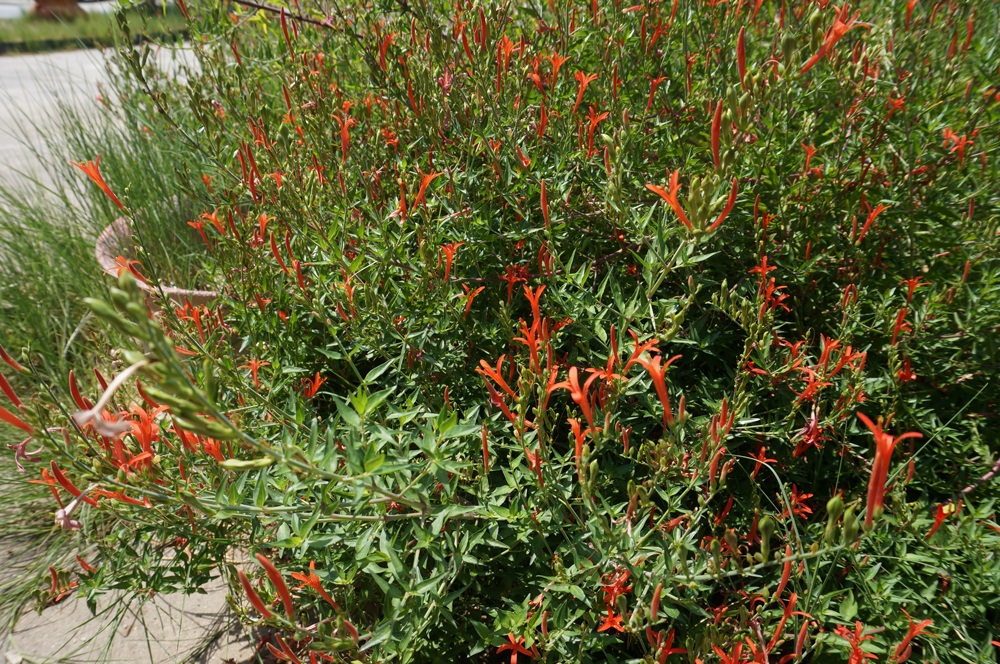Meet a local landscaper whose wide urban oasis of native flora and fauna began with a humble herb garden.
Note: “Plants and People” is an occasional series featuring San Antonio residents with a diverse botanical background and perspectives on how plants impact cultures and landscape practices.
For Drake White, her love of plants began when she was young, though she didn’t recognize it until later in life.
After earning a culinary degree in her late twenties, she started an herb garden to use in her dishes. Immediately she had visitors. Caterpillars invaded her garden and were eating her herbs. Out of curiosity, she asked a neighbor about them. But when it was suggested that she use a toxic pesticide to kill the caterpillars outright, she rejected the idea. Instead, she looked up the caterpillars online and fell down the rabbit hole of butterflies.
White read about plants that different species of fritillaries, swallowtails, and monarchs need to eat and where they lay their eggs. She learned about the benefits of native over tropical or ornamental plants, and came to accept caterpillar-munched plants as part of the process of fostering life in her own backyard.
But White’s biggest “aha moment” came when she noticed the hummingbirds had stopped eating at the feeders and instead were feasting on the nectar her new plants were producing. All the native plants like flame acanthus, passion vine, and sunflowers were favored while the bird feeders sat full. She went from filling the feeders once a day to almost never because the birds only wanted what she was growing in her yard. Everything, she realized, was connected.

Over the course of the following year, her humble garden overtook her backyard. That’s when she decided to redo her front yard with the help of all the SAWS WaterSaver Coupons she could get her hands on. Yards of St. Augustine grass were replaced with beds, a rain garden, ground cover, and a free tree she got from one of the city’s giveaways. Her garden expanded beyond an herb patch into an urban oasis with native flora of all kinds.

“My obsession with butterflies made my yard National Geographic [worthy],” White quipped. “I have everything here in an urban setting. When you drive down the street you know which yard is mine, the one with all the life in it.”

Most importantly, everything is self-sufficient, even in the sizzling heat, she added.
White admits she started her landscape design business, The Nectar Bar, to put habitat in other people’s homes because she simply didn’t want to stop at her own yard.
What project(s) are you working on right now?
In 2020, White developed a program called Propagation Station: a community-based approach to starting new habitat-driven gardens. The program is centered on building skills and fostering connections within communities and is based in schools right now. It starts with a propagation class where White teaches students how to grow and maintain native plants in their own homes and gardens. Each student is assigned a few plants to grow so that by the end of the school year, the class has a variety of plants to sow the garden-to-be.
“If you grew something yourself, you’re invested in it,” explains White, adding that the students take ownership of the project, making the garden a success.
Since 2020 White has taken on a handful of projects with Propagation Station and is hoping to expand its volunteer base to the general public.
Which plant(s) are you connecting with most right now?
Arrowheads (Sagittaria platyphylla) — she was given a twig in winter and now it’s flourishing — and water hyssop (Bacopa monnieri) ranks a close second after she discovered it’s a host plant for the white peacock butterfly. And of course, mistflowers because bees, butterflies, hummingbirds, et al just can’t get enough of them.
What inspires you to do what you do?
“That one client [who] sends you a text at ten at night,” White says, who is bursting with excitement about their new plants. The idea that she instilled enthusiasm in someone else, that someone is so inspired they can’t resist sharing a moment of joy or gratitude for their newfound green thumb — those are the moments that motivate her.
What advice do you have for new gardeners/plant enthusiasts?
“Learn patience and teach yourself not to water,” encouraged White. “Continue to grow.”


